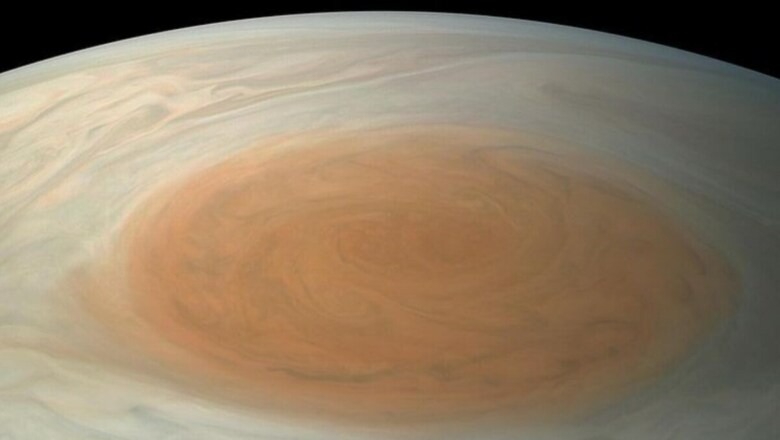
views
The National Aeronautics and Space Administration (NASA) has been active on social media, sharing mission insights with the public. We get to view some mesmerising pictures of galaxies, planets and other celestial bodies. The space agency just provided us with yet another stunning glimpse of space. This time it’s Jupiter’s Great Red Spot, in all its magnificence.
NASA shared the photo on Instagram, stating that their spacecraft Juno photographed Jupiter’s Great Red Spot in a full-colour snapshot taken from approximately 8,648 miles (13,917 km) away. They continued by stating that scientists think the “most iconic storm” in our solar system has been around for more than 350 years. But since NASA’s Voyager spacecraft recorded it in 1979, the storm’s height has decreased by an eighth, and its width has decreased by at least a third, according to the data.
The Great Red Spot is still twice the size of Earth, and new Juno investigations show that the storm falls nearly 200 miles (300 km) into the planet’s clouds, they further added. The Great Red Spot’s winds peak at around 400 mph (643 kph) since there is no solid land on Jupiter to slow down storms.
NASA described the image by saying that wisps of orange, tan, and red appear to spiral in the storm and that the Great Red Spot appears in the centre of the picture. The planet’s horizon is faintly visible in the top portion of the image, giving the beige, brown and slightly blue hues of the gas giant a striking contrast to the pitch-black emptiness.
View this post on Instagram
The $1.1 billion Juno mission began in August 2011 and reached around Jupiter on July 4, 2016. Using a very elliptical orbit, the spacecraft explores the gas giant once every 53.5 Earth days and conducts scientific studies during near approaches.
According to Business Insider, the probe has flown over 1 billion miles since its launch, and its JunoCam gadget has captured hundreds of thousands of photographs.
Juno analyses Jupiter’s magnetic and gravitational fields and investigates the composition, temperature, and behaviour of the planet’s dense atmosphere during these flybys. Scientists are gaining a better understanding of Jupiter’s evolutionary history and internal structure thanks to these data, which show how the massive planet formed and changed over time.

















Comments
0 comment